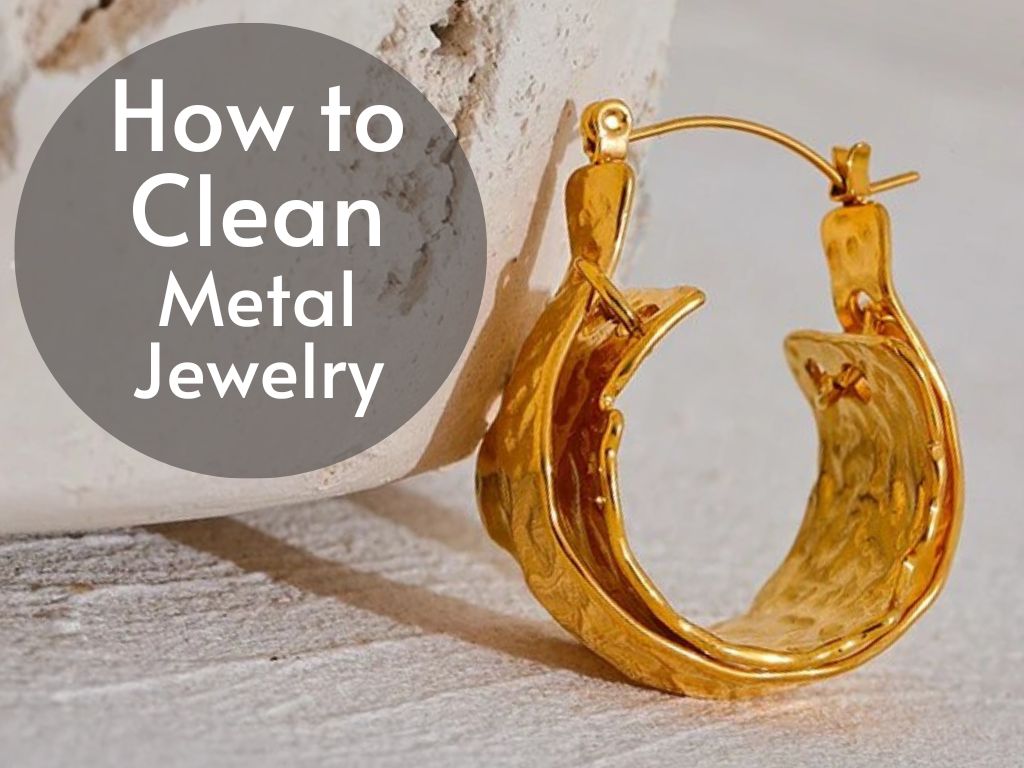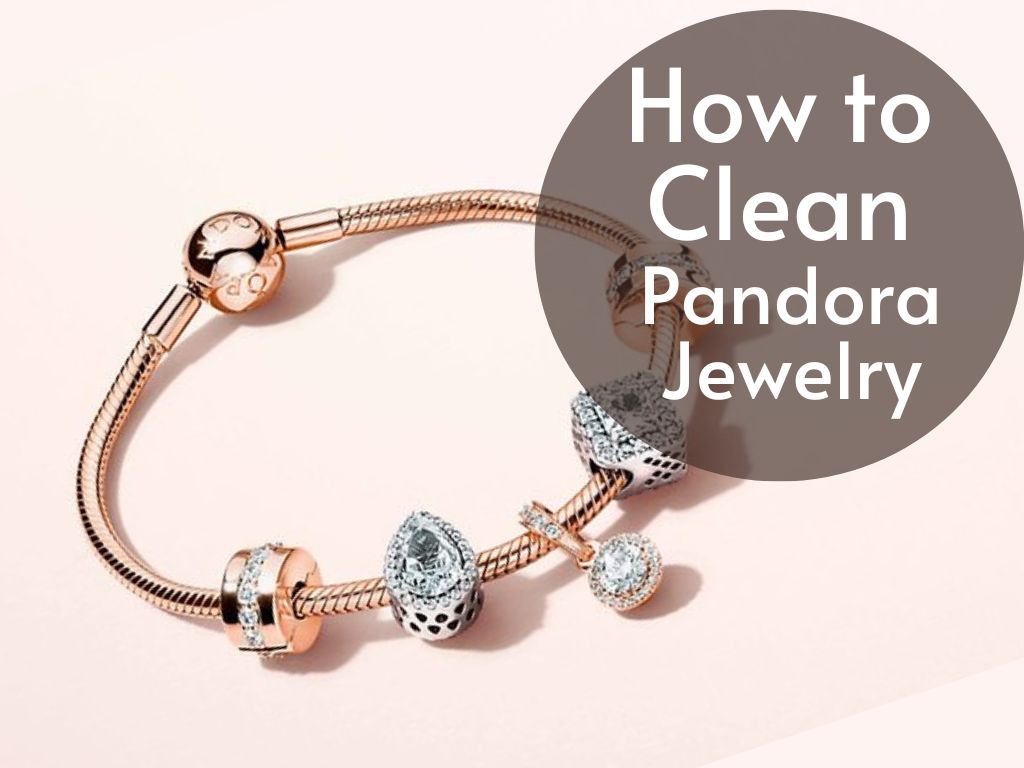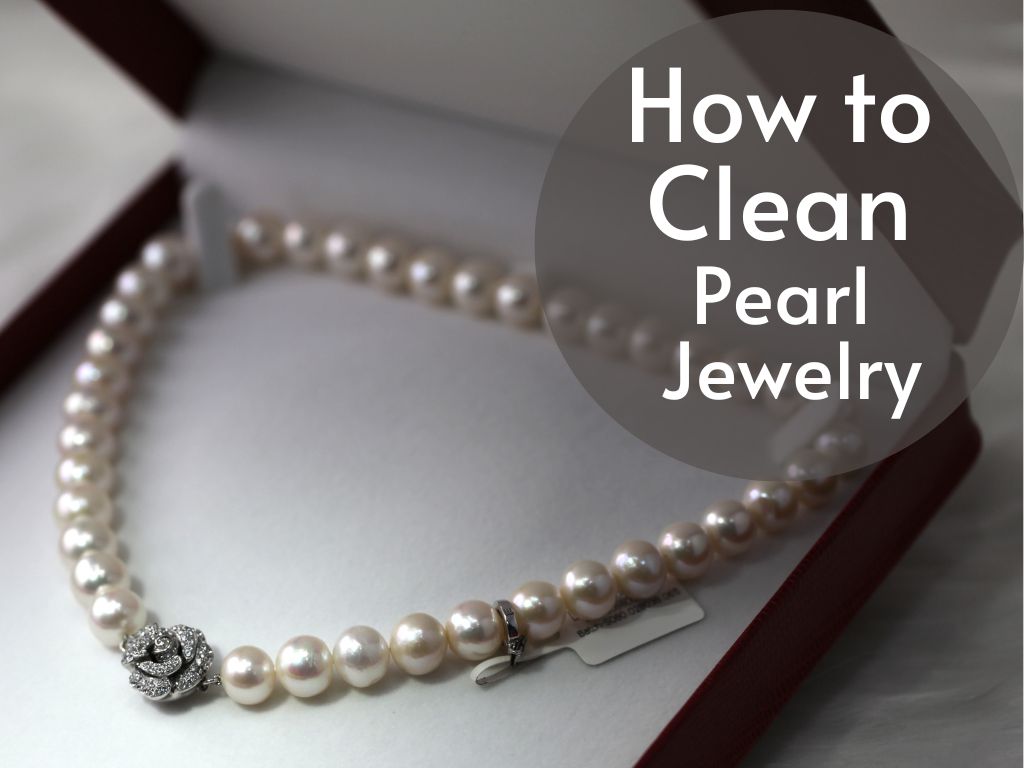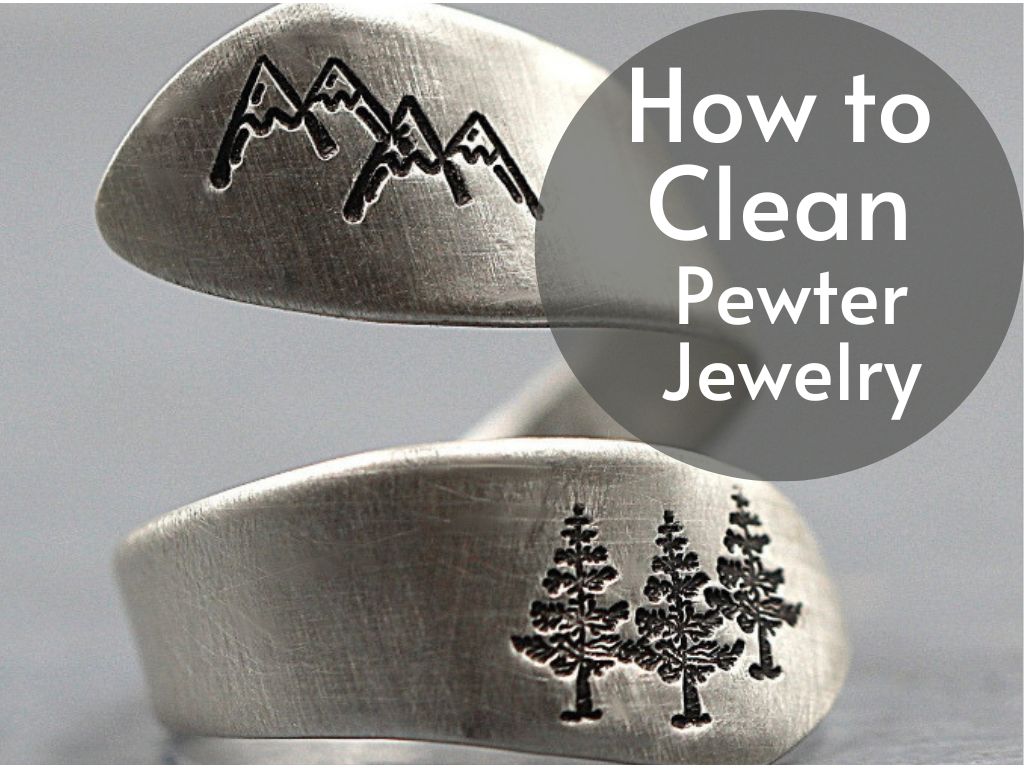Gold jewelry holds a special place in our hearts. Whether it’s an heirloom piece passed down through generations or a recent purchase to adorn our wrists, fingers, or necks, gold jewelry brings elegance and sophistication to any outfit.
However, over time, these precious pieces can lose their luster and brilliance due to exposure to environmental factors and everyday wear. That is why regular cleaning is essential to maintain the beauty and value of your gold jewelry.
Importance of Cleaning Gold Jewelry Regularly
Cleaning your gold jewelry on a regular basis not only helps keep it looking stunning but also serves numerous other purposes. Firstly, regular cleaning prevents the buildup of dirt, oils, and other residues that accumulate on the surface of your jewelry over time.
These substances can dull the shine and sparkle of your gold pieces, diminishing their overall allure. Additionally, cleaning gold jewelry regularly allows you to inspect each piece for any signs of damage or loose stones.
By closely examining your jewelry during cleaning sessions, you can catch potential issues early on and take timely action to prevent further damage or loss. This way, you can ensure that your precious gems stay securely in place while maintaining their captivating beauty.
Introduction to the Use of Baking Soda as a Natural and Effective Cleaning Agent
Baking soda has long been hailed as a versatile household ingredient that can tackle various cleaning tasks effectively – from scrubbing away stains on kitchen countertops to freshening up carpets. What many may not realize is that this humble white powder can also work wonders when it comes to rejuvenating gold jewelry. Baking soda possesses unique properties that make it an ideal choice for cleaning delicate items like gold jewelry.
Its mild abrasiveness helps remove tarnish without scratching or damaging the metal surface. Moreover, baking soda’s alkaline nature allows it to dissolve dirt and grime, leaving your gold jewelry looking as brilliant as the day you first wore it.
Unlike commercial cleaners that often contain harsh chemicals or abrasive ingredients, baking soda is a natural alternative that is safe to use on various types of gold jewelry. Whether your pieces are solid gold, gold-plated, or gold-filled, baking soda offers a gentle yet effective cleaning method that restores their shine and radiance without causing any harm.
Understanding Gold Jewelry
A Gleaming World: The Intricacies of Gold Purity and Karatage
Gold, a precious metal revered throughout history for its timeless beauty and value, comes in various forms and purities. Understanding gold purity is crucial when it comes to caring for your jewelry. The purity of gold is measured in karats (abbreviated as “k” or “kt”), which represents the ratio of pure gold to other metals in a piece.
Pure gold is 24 karats, while the most common form used in jewelry is 14 karat gold, comprising 58.3% pure gold mixed with other metals like copper or silver to enhance durability. It’s important to note that different countries have varying standards for marking the purity of gold jewelry.
For instance, in the United States, you’ll commonly find markings such as “14k” or “585” indicating 14-karat gold. In contrast, European countries often use decimal numbers like “.585” or “.583.” Understanding these markings will help you accurately identify the purity of your jewelry and determine appropriate cleaning methods.
The Multifaceted World of Gold Jewelry: Types and Varieties
Gold jewelry encompasses a diverse range of styles and compositions that cater to various tastes and budgetary considerations. Let’s explore some common types:
1) Solid Gold: As its name implies, solid gold jewelry contains no other materials besides pure gold itself. These pieces are crafted entirely from a specific karatage of gold—ranging from 10k to 24k—and offer enduring beauty with little risk of tarnishing or fading.
2) Gold-Plated Jewelry: In this type, a thin layer of real gold is bonded onto a base metal such as brass or sterling silver using electroplating techniques. While more affordable than solid gold options, it’s important to note that the gold plating may wear off over time and require special care.
3) Gold-Filled Jewelry: Gold-filled jewelry is created by mechanically bonding a layer of solid gold—usually 10k or 14k—to a base metal core. This results in a thicker layer of gold compared to gold-plated jewelry, making it more durable and long-lasting.
Unveiling the Culprits: Factors Contributing to Tarnishing or Dullness in Gold Jewelry
Despite its resilience, gold jewelry can still lose its luster over time due to various factors. The most common culprits include exposure to chemicals, body oils, cosmetics, and perspiration.
Additionally, environmental elements like air pollutants and humidity can contribute to tarnishing or dullness. Even though pure gold is resistant to corrosion, impurities present in lower karatages make the metal susceptible to such effects.
Furthermore, certain activities can accelerate the tarnishing process. For instance, wearing gold jewelry during heavy physical exertion or while swimming in chlorinated pools can increase the likelihood of damage or discoloration.
Being aware of these factors will guide you in implementing appropriate cleaning routines for your precious pieces. Understanding the intricacies of gold purity and karatage helps you appreciate and care for your jewelry better.
Recognizing different types of gold jewelry—such as solid gold, gold-plated, and gold-filled-empowers you with knowledge about their unique characteristics and maintenance requirements. Additionally, being aware of factors that contribute to tarnishing or dullness allows you to take proactive steps in preserving your cherished treasures for generations to come.
The Benefits of Using Baking Soda for Cleaning Gold Jewelry
Gentle and Non-Abrasive Nature of Baking Soda
When it comes to cleaning gold jewelry, using a gentle and non-abrasive cleaner is crucial to maintain its luster and prevent any damage. Baking soda proves to be an excellent choice in this regard.
Its fine texture, composed of tiny particles, ensures that it won’t scratch or harm the delicate surface of gold jewelry. Unlike some commercial cleaners that often contain harsh chemicals or abrasive components, baking soda gently lifts away dirt and grime without causing any harm.
Natural and Chemical-Free Alternative to Commercial Cleaners
In a world where synthetic products dominate the market, many individuals seek more natural alternatives for cleaning purposes. Baking soda offers a fantastic solution as a chemical-free option for cleaning gold jewelry effectively.
It is an environmentally friendly substance that does not release harmful fumes or contribute to pollution during use. By opting for baking soda, you can eliminate the need for potentially toxic commercial cleaners while still achieving remarkable results.
Versatility in Removing Tarnish, Dirt, and Grime from Various Types of Gold Jewelry
One remarkable characteristic of baking soda is its versatility in tackling different types of tarnish and dirt that accumulate on gold jewelry over time. Whether your gold piece has developed a light tarnish or is covered in stubborn grime, baking soda can handle the challenge with ease.
It effectively removes tarnish by breaking down the sulfur compounds responsible for discoloration on the metal surface. Additionally, baking soda’s alkaline properties act as a natural dirt-lifter, making it highly effective in removing everyday residue such as oils, lotions, or dust.
Baking soda’s versatility extends beyond removing tarnish and dirt; it can also be safely used on various types of gold jewelry. Whether you have solid gold, gold-plated, or gold-filled pieces, baking soda is gentle enough to clean them all.
However, it’s essential to exercise caution with delicate jewelry or pieces that include gemstones or pearls. While baking soda is generally safe for most gold jewelry, it’s always recommended to test a small inconspicuous area before cleaning the entire item.
Using baking soda as a cleaning agent for gold jewelry offers numerous benefits. Its gentle and non-abrasive nature ensures that your precious pieces are protected while being thoroughly cleaned.
As a natural and chemical-free alternative to commercial cleaners, baking soda aligns with environmentally friendly practices and promotes a healthier approach to cleaning. Furthermore, its versatility in removing tarnish, dirt, and grime makes it an invaluable tool for maintaining the beauty and brilliance of various types of gold jewelry.
Preparing the Cleaning Solution
Ingredients needed: baking soda, warm water, soft cloth or toothbrush, mild dish soap (optional)
To effectively clean gold jewelry with baking soda, it is essential to gather the necessary ingredients. These items are commonly found in most households and can easily be obtained. The primary ingredient is baking soda, a versatile and natural cleaning agent known for its ability to remove stains and grime.
Additionally, you will need warm water to create a solution or paste with the baking soda. A soft cloth or toothbrush is required for gentle scrubbing, while mild dish soap can be used as an optional additive for tougher stains.
Step-by-step instructions on creating a baking soda cleaning paste or solution:
1. Begin by preparing a clean and safe workspace for your gold jewelry cleaning process. Lay down a soft cloth or towel to prevent any loss of small pieces or contact with hard surfaces that could scratch delicate jewelry.
2. Assemble your ingredients: Measure out approximately one tablespoon of baking soda into a small bowl or container. Ensure that the container is clean and preferably non-reactive to maximize safety during the process.
3. Gradually add small amounts of warm water to the bowl containing the baking soda while stirring gently with either a spoon or your finger. Continue adding water until you achieve a thick but spreadable consistency like toothpaste.
4. If desired, add a few drops of mild dish soap to enhance the cleaning power of your solution. However, exercise caution when using dish soap as certain types may contain harsh chemicals that could damage sensitive gemstones set in gold jewelry.
5. Once your paste has been prepared, dip a soft cloth or toothbrush into it and apply it evenly onto the surface of your gold jewelry piece(s). Gently rub in circular motions over areas prone to tarnish and dullness.
6. For intricate designs or hard-to-reach areas, you may use a toothbrush to access every nook and cranny. Ensure that the bristles of the toothbrush are soft and non-abrasive to avoid scratching the gold.
7. After scrubbing, rinse your gold jewelry under warm water to remove any remaining baking soda residue.
Be thorough in this step to ensure all traces of the cleaning solution have been removed. By following these step-by-step instructions, you will be well-equipped to create a reliable baking soda cleaning paste or solution for rejuvenating your gold jewelry’s shine and luster.
Cleaning Solid Gold Jewelry with Baking Soda
1) Light Tarnish: Soaking Method using a Baking Soda Solution
When dealing with light tarnish on your solid gold jewelry, a gentle soaking method using a baking soda solution can work wonders. Start by preparing the solution in a small bowl or container. Mix one tablespoon of baking soda with warm water, ensuring that the baking soda is completely dissolved.
Then, place your gold jewelry into the solution, making sure it is fully submerged. Allow the jewelry to soak for approximately 15-20 minutes to give the baking soda enough time to work its magic.
During this time, the alkaline nature of baking soda will react with any tarnish or dirt on the surface of your gold jewelry, helping to break it down and loosen it from the metal. After soaking, carefully remove your jewelry from the solution and rinse it thoroughly under warm running water.
Make sure all traces of baking soda are removed to prevent any residue from dulling its shine. Use a soft cloth or towel to gently dry and polish your gold jewelry.
2) Moderate Tarnish: Creating a Paste with Baking Soda and Water
For gold jewelry with moderate tarnish that requires more intensive cleaning, creating a paste using baking soda and water is an effective method. In a small bowl or dish, combine equal parts of baking soda and water to form a thick paste-like consistency.
Dab your finger or a clean cloth into this mixture and apply it onto your tarnished gold jewelry. Gently rub the paste onto all surfaces of the piece—be sure not to use excessive force as this may cause scratches.
The mild abrasive properties of baking soda will help remove built-up grime without damaging the underlying metal. Allow the paste to sit on your gold jewelry for approximately 10-15 minutes before rinsing it off under warm running water.
Use your fingers or a soft toothbrush to gently scrub away any remaining tarnish or dirt. Rinse thoroughly and dry the jewelry using a soft cloth, ensuring that all traces of the paste are removed.
3) Heavy Tarnish: Adding Mild Dish Soap to the Paste for Extra Cleaning Power
In cases where your solid gold jewelry has heavy tarnish that seems stubborn to remove, adding mild dish soap to the baking soda paste can provide extra cleaning power. After creating the paste with equal parts baking soda and water, add a small amount of mild dish soap—an amount roughly equivalent to the size of a pea—into the mixture. Thoroughly blend the ingredients together until you have a well-combined paste that still maintains its thickness.
Apply this enhanced paste onto your heavily tarnished gold jewelry, ensuring even coverage on all surfaces. Allow the mixture to sit on your jewelry for about 5-10 minutes before gently scrubbing it with a soft toothbrush.
The combination of baking soda’s abrasiveness and the grease-cutting properties of dish soap will work together effectively in removing stubborn tarnish. Once you’ve scrubbed away all traces of tarnish, rinse your gold jewelry under warm running water and dry it completely with a soft cloth or towel.
Take care not to leave any moisture behind, as this can contribute to future tarnishing. By following these methods based on different levels of tarnish, you’ll be able to restore vibrancy and shine to your solid gold jewelry using simple yet powerful ingredients like baking soda and mild dish soap if necessary.
Cleaning Gold-Plated or Gold-Filled Jewelry with Baking Soda
Explaining the Delicate Nature of These Types of Jewelry
Gold-plated and gold-filled jewelry are popular choices for their affordability and aesthetic appeal. However, it’s crucial to understand that these types of jewelry have a thin layer of gold coating over a base metal. This thin layer can easily wear off or get damaged if not handled with care.
Therefore, cleaning gold-plated or gold-filled jewelry requires a gentle approach to prevent any damage to the delicate coating. The key concern when cleaning gold-plated or gold-filled jewelry is to avoid any abrasive substances or vigorous scrubbing that could remove the gold layer.
Harsh chemicals, abrasive materials, and rough scrubbing can remove the protective coating, leaving the base metal exposed and causing irreversible damage. It is essential to use mild cleaners and soft cleaning tools to maintain the integrity of these pieces.
Providing Guidelines for Gentle Cleaning Techniques using Baking Soda
When it comes to cleaning gold-plated or gold-filled jewelry, baking soda proves to be an excellent choice due to its non-abrasive nature. Here are some guidelines for using baking soda as a gentle cleaner for such delicate pieces:
1. Start by creating a baking soda paste: Mix equal parts baking soda and water in a small bowl until you achieve a thick paste-like consistency.
2. Gently apply the paste: Dip a soft cloth or toothbrush into the baking soda paste and carefully apply it onto the surface of your gold-plated or gold-filled jewelry. Ensure you cover all areas that need cleaning without applying excessive pressure.
3. Lightly scrub: Using gentle circular motions, lightly scrub the jewelry with the baking soda paste-coated cloth or toothbrush. Be cautious not to scrub too vigorously, as it may wear off the gold layer.
4. Rinse and dry: Once you have gently scrubbed the jewelry, rinse it thoroughly under lukewarm water to remove any residue.
Pat it dry with a soft towel or let it air-dry completely before storing it. By following these guidelines, you can effectively clean gold-plated or gold-filled jewelry using baking soda without causing any damage or diminishing the beauty of your beloved pieces.
Additional Tips and Precautions
Warnings against using baking soda on porous materials
While baking soda is an excellent cleaning agent for gold jewelry, it is important to exercise caution when using it on porous materials. Avoid using baking soda on gemstones or pearls that may have porous surfaces.
The abrasive nature of baking soda can scratch or damage these delicate stones, compromising their beauty and integrity. Instead, consider seeking professional help or using alternative cleaning methods specifically designed for these types of gemstones.
The power of gentle cleaning techniques
When it comes to cleaning gold jewelry, remember that a gentle touch goes a long way. Avoid scrubbing vigorously or using excessive force while applying the baking soda paste or solution.
This can potentially cause scratches on the surface of the gold and other delicate embellishments. Instead, use a soft cloth or toothbrush with light pressure to remove tarnish and dirt effectively.
Extra precautions for intricate designs
Gold jewelry often features intricate designs such as delicate filigree work or embedded gemstones. In such cases, take additional precautions to ensure the preservation of these details while cleaning with baking soda. Carefully apply the homemade paste with a soft-bristle toothbrush in small circular motions to reach all crevices without damaging any fine details.
For areas that are harder to reach, use a cotton swab dipped in the baking soda solution to gently clean those nooks and crannies.
Conclusion
Cleaning your treasured gold jewelry with baking soda not only restores its shine but also allows you to maintain its timeless elegance in an eco-friendly manner.
With proper precautions in place, you can safely remove tarnish and grime from your favorite pieces without causing any harm. Embrace this simple yet effective method for reviving your gold jewelry’s radiance and cherish their beauty for years to come!





